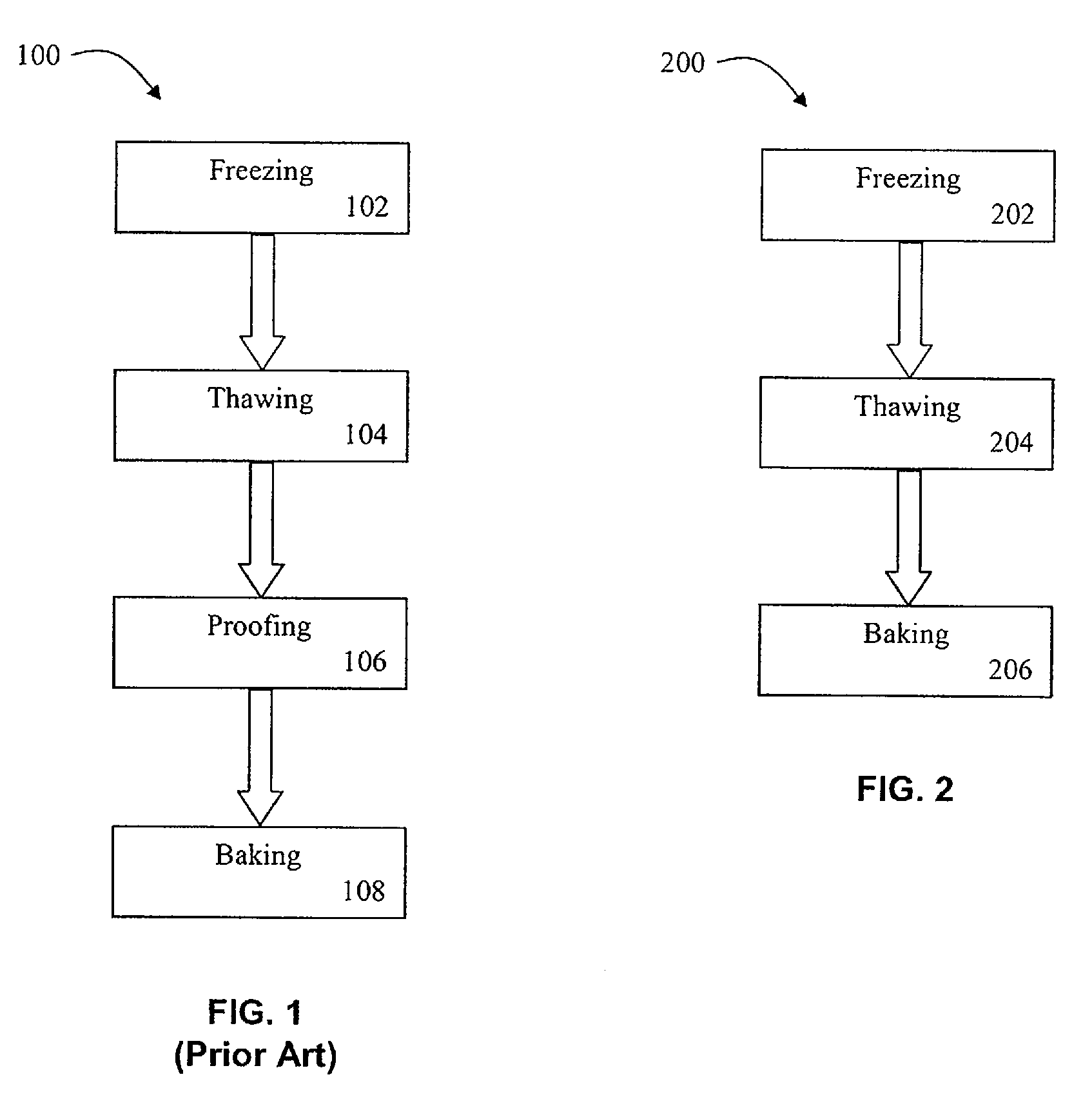Retarder-to-oven laminated dough
a technology of laminated dough and retarder, which is applied in the field of laminated dough compositions, can solve the problems of reducing the shelf life of retarder, so as to improve the shelf life and reduce the cost of retarder. , the effect of reducing the difficulty of retarder thawing
- Summary
- Abstract
- Description
- Claims
- Application Information
AI Technical Summary
Benefits of technology
Problems solved by technology
Method used
Image
Examples
example 1
General Range of Formulations for a Croissant Prepared from a Laminated Dough of the Disclosure
[0066]
Layer Dough CompositionIngredientWeight % of DoughFlour47–54Water28–35Butter0–2Yeast3–5Vital Wheat Gluten3–5Sugar2.5–5 Salt0.08–1.1 Water-binding agent0–1Emulsifier 0–0.3Dough developing agent 0–0.003
Total Laminated Dough Product CompositionIngredientTotal Weight PercentLaminated Dough70–80CompositionShortening (Butter)20–30
[0067]To prepare a croissant from a laminated dough of the disclosure, the following procedure was used:
[0068]The butter to be used in the butter layers was softened by mixing the butter. The softened butter was placed in the middle of parchment paper, covered with parchment, and sheeted into a slab. A layer dough was subsequently prepared as follows. All ingredients except for the butter for the shortening layers, were mixed until blended and fully developed. The layer dough was placed in a sheeter and sheeted into a slab.
[0069]At this point, the shortening i...
PUM
 Login to View More
Login to View More Abstract
Description
Claims
Application Information
 Login to View More
Login to View More - R&D
- Intellectual Property
- Life Sciences
- Materials
- Tech Scout
- Unparalleled Data Quality
- Higher Quality Content
- 60% Fewer Hallucinations
Browse by: Latest US Patents, China's latest patents, Technical Efficacy Thesaurus, Application Domain, Technology Topic, Popular Technical Reports.
© 2025 PatSnap. All rights reserved.Legal|Privacy policy|Modern Slavery Act Transparency Statement|Sitemap|About US| Contact US: help@patsnap.com

